
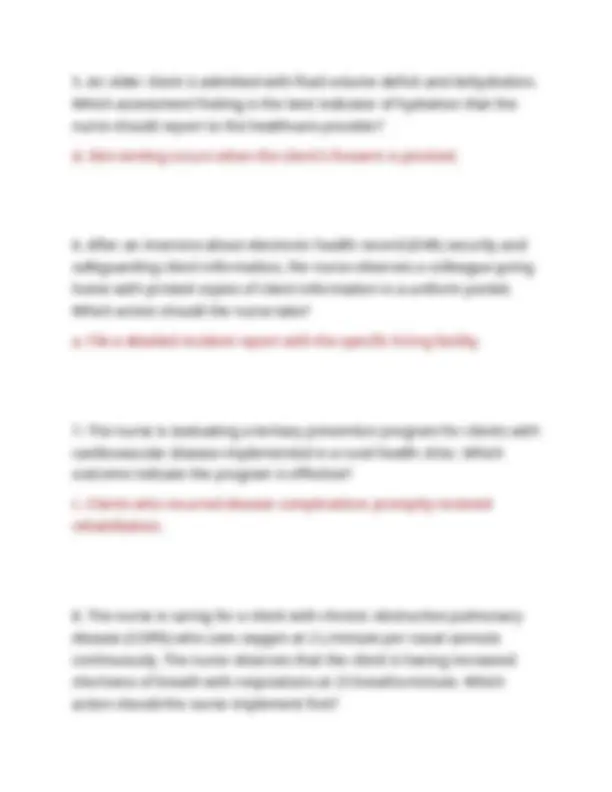
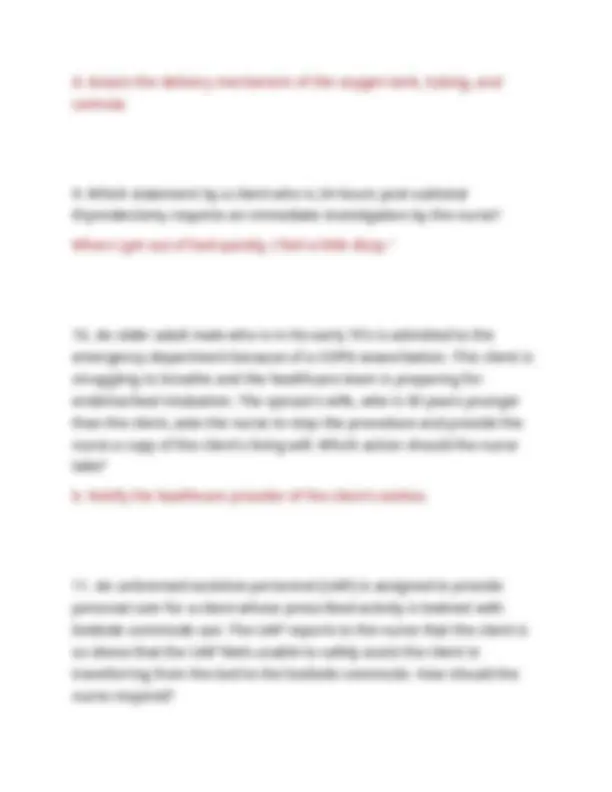
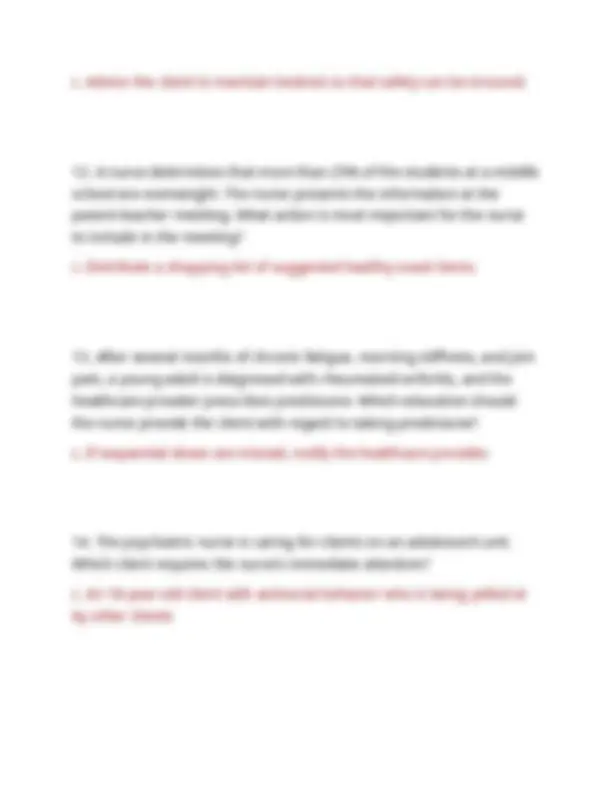
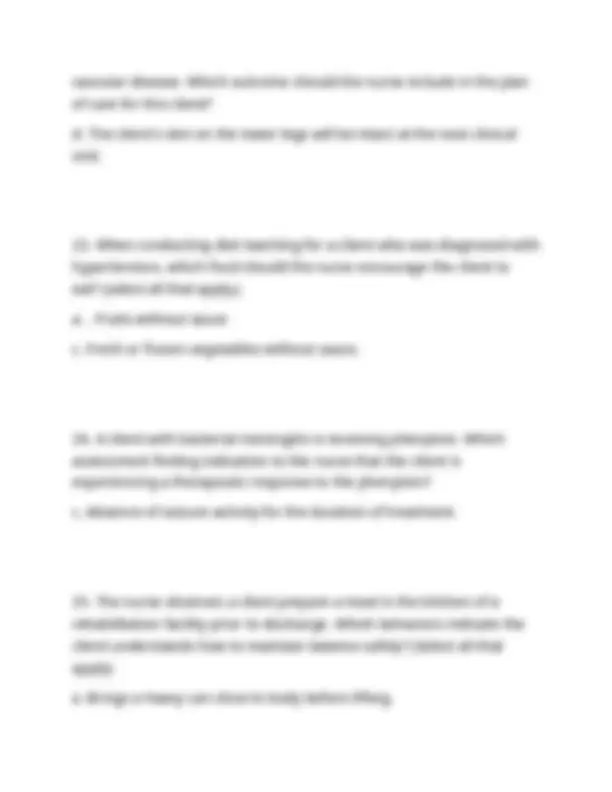
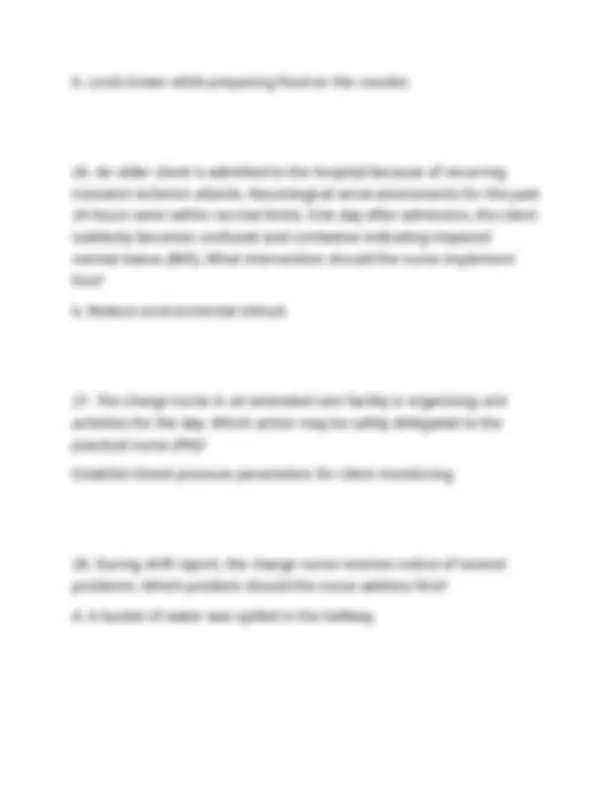
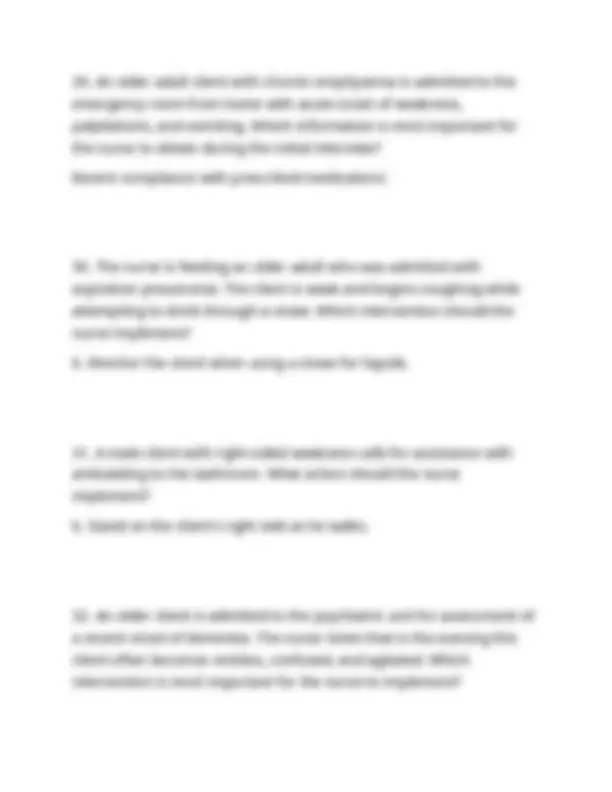
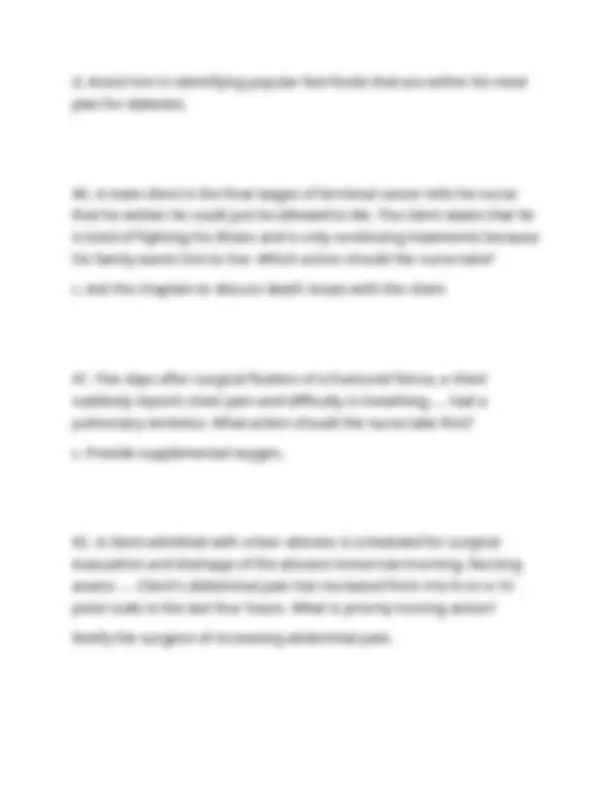
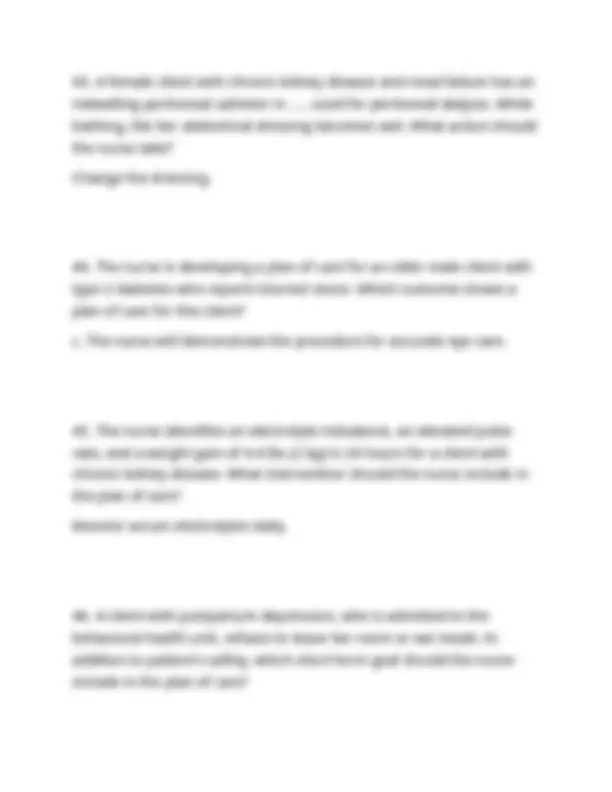
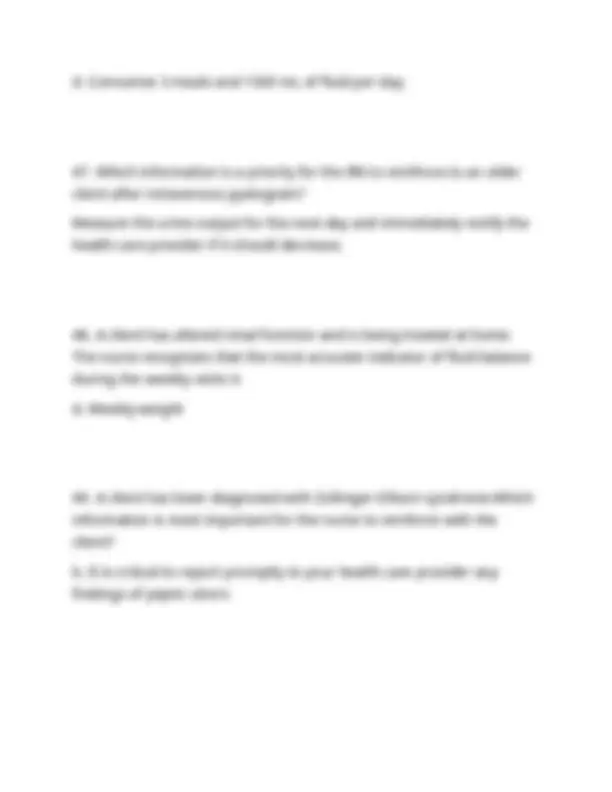
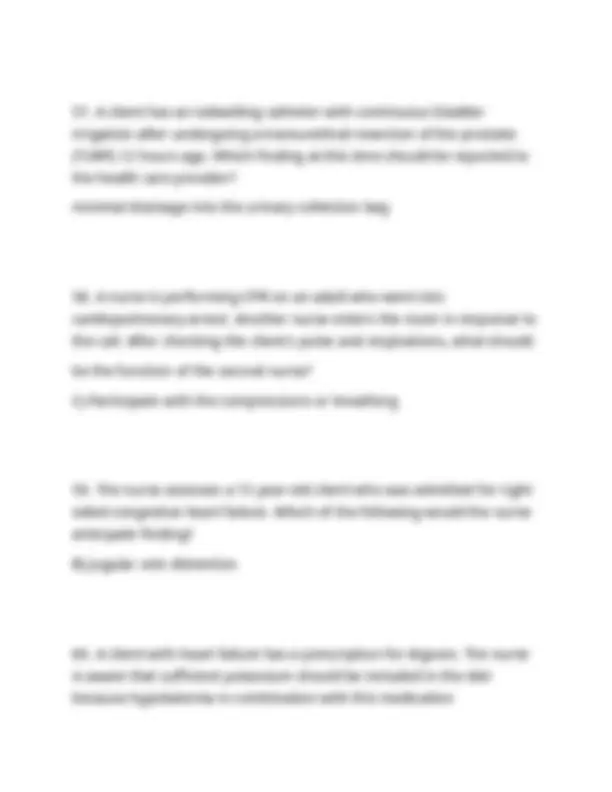
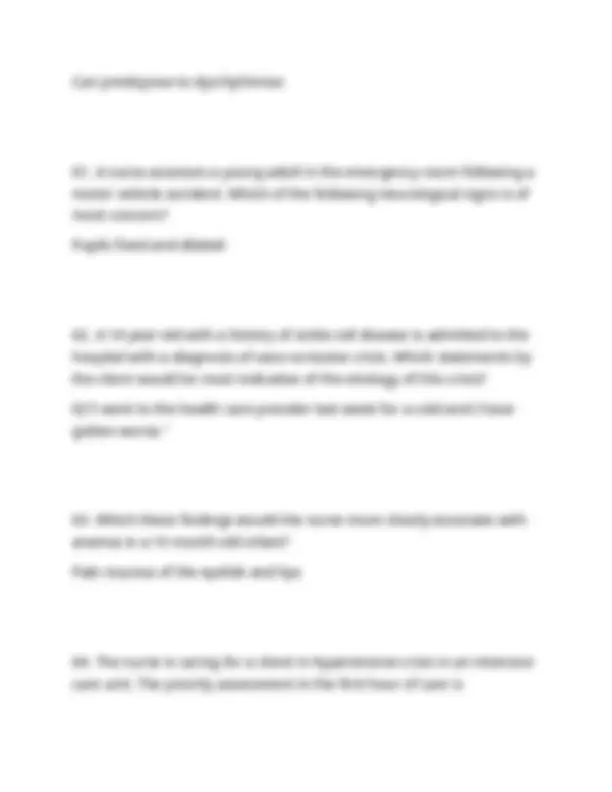
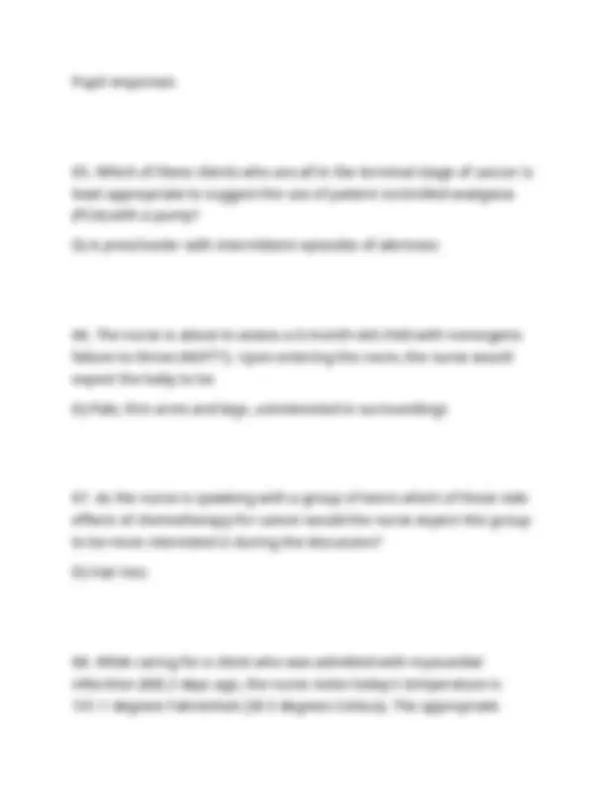
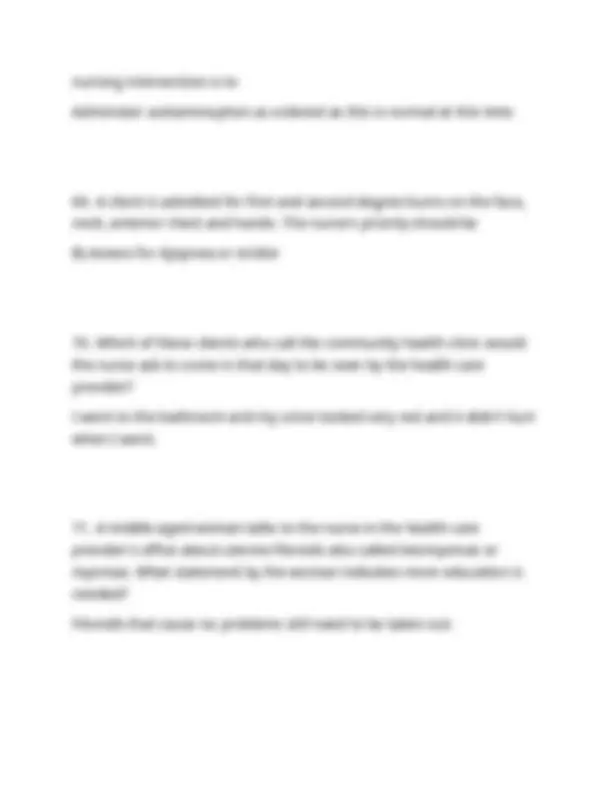
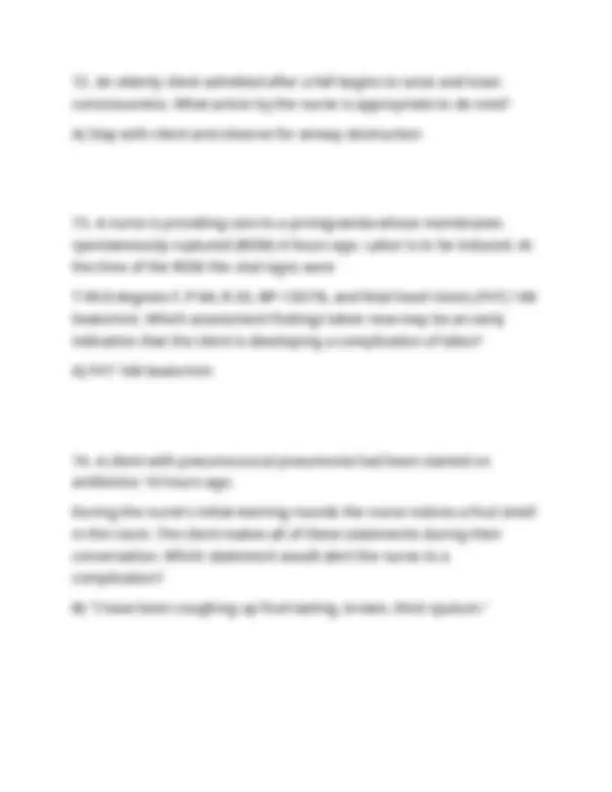
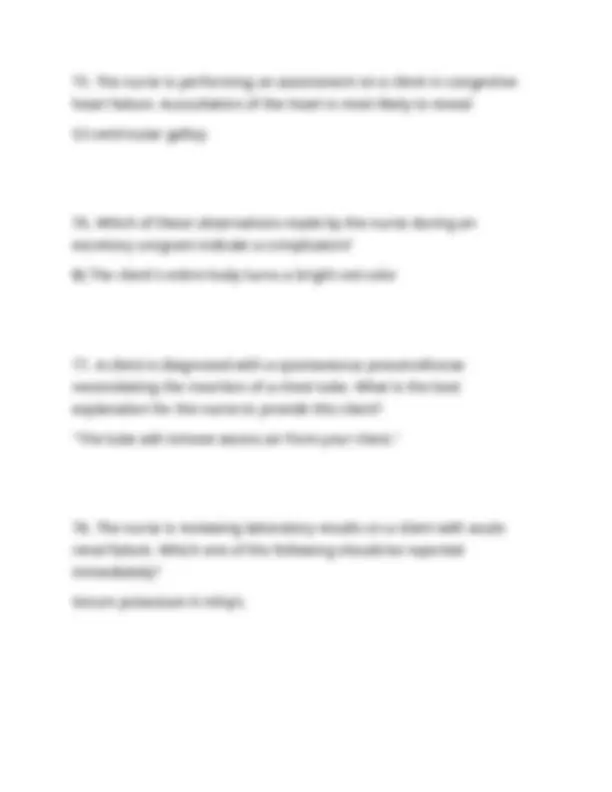
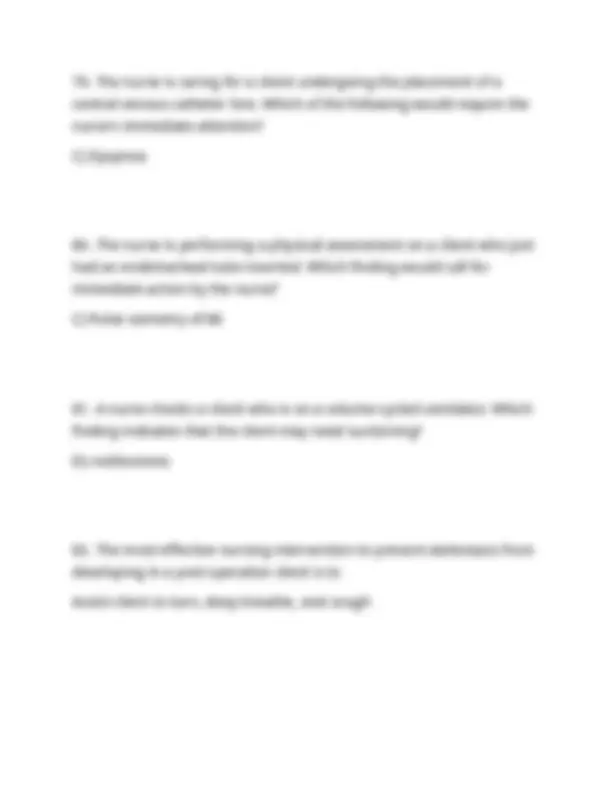
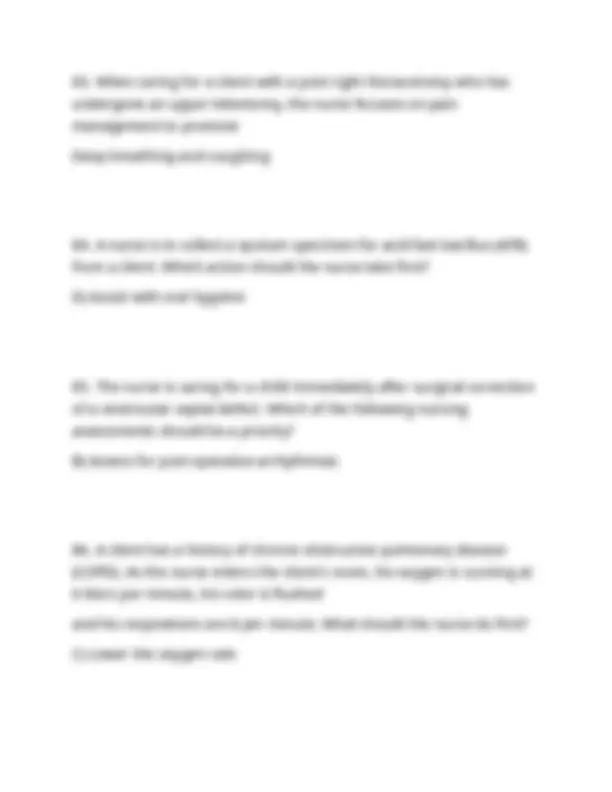
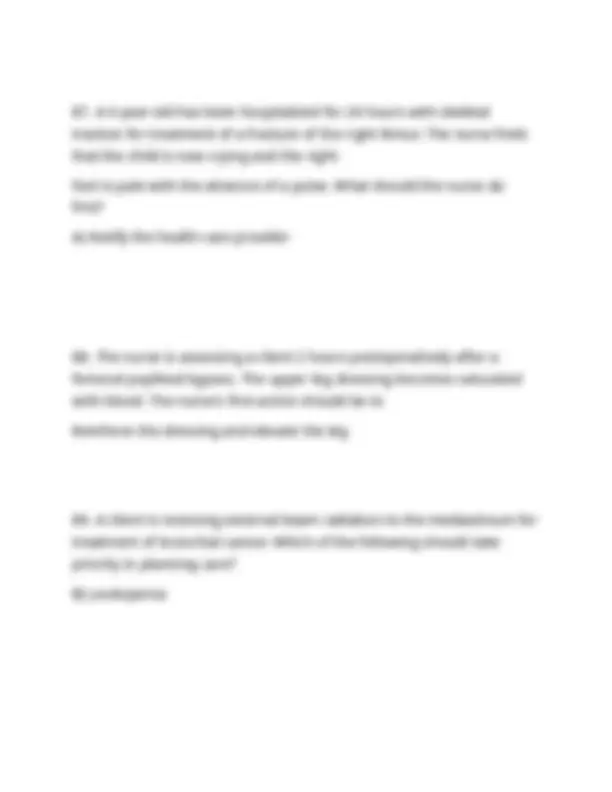
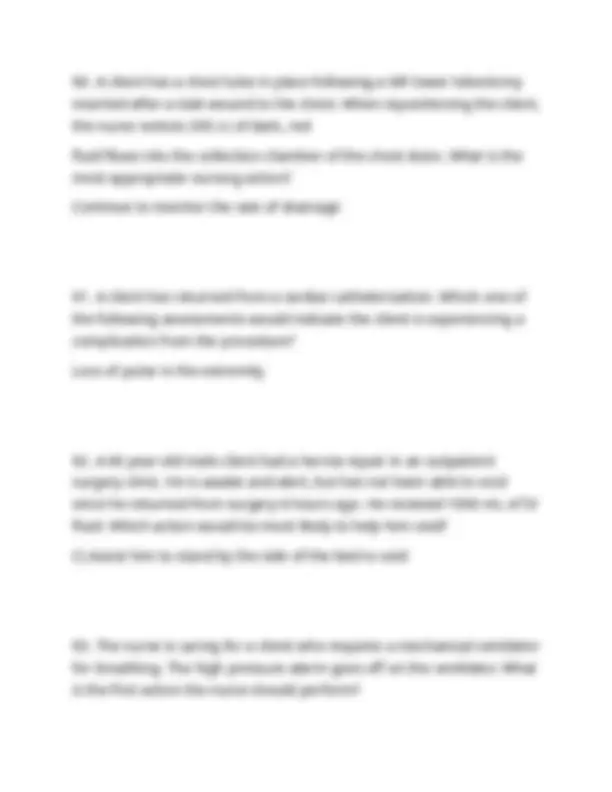
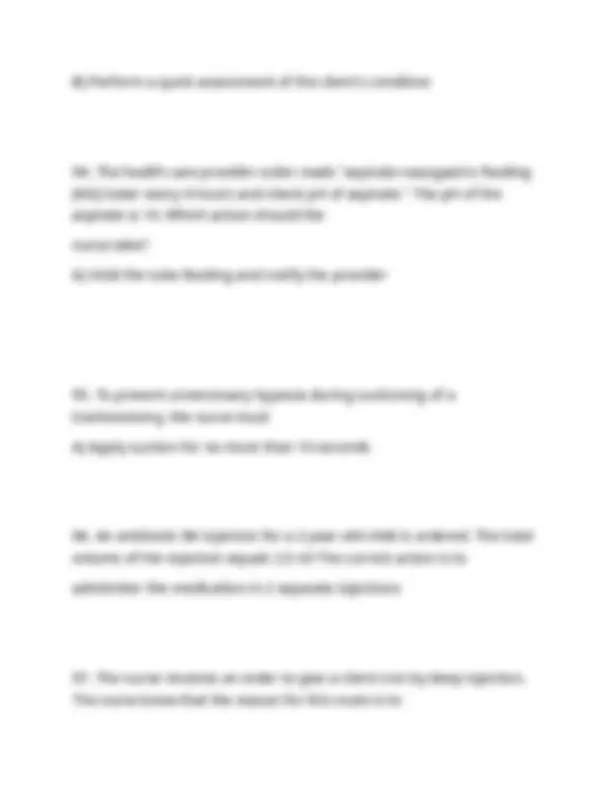
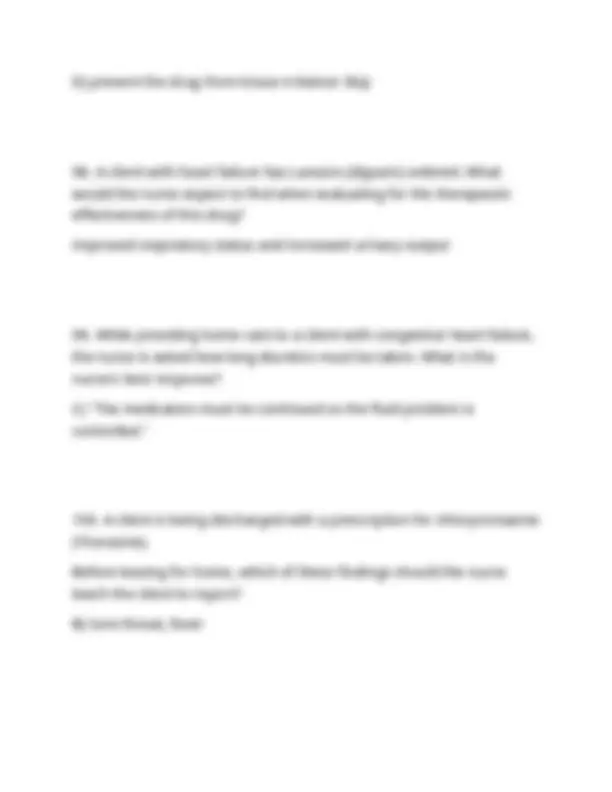
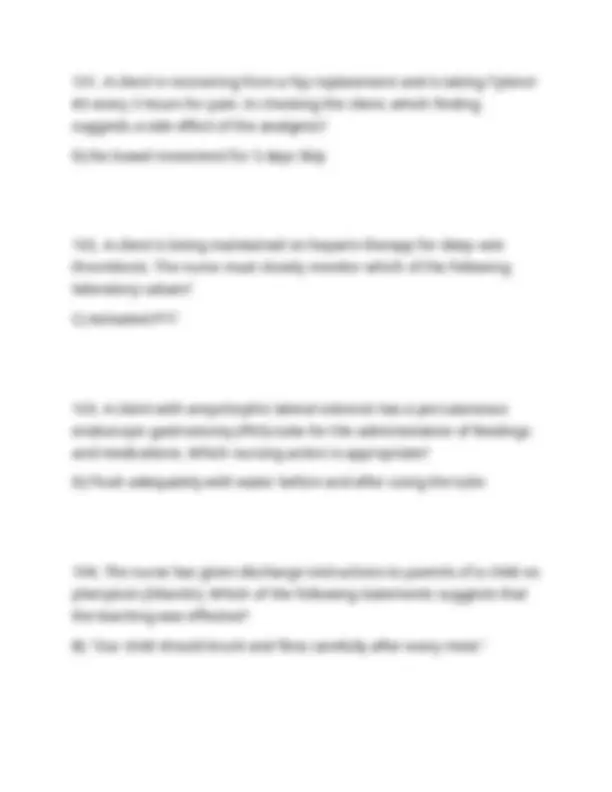
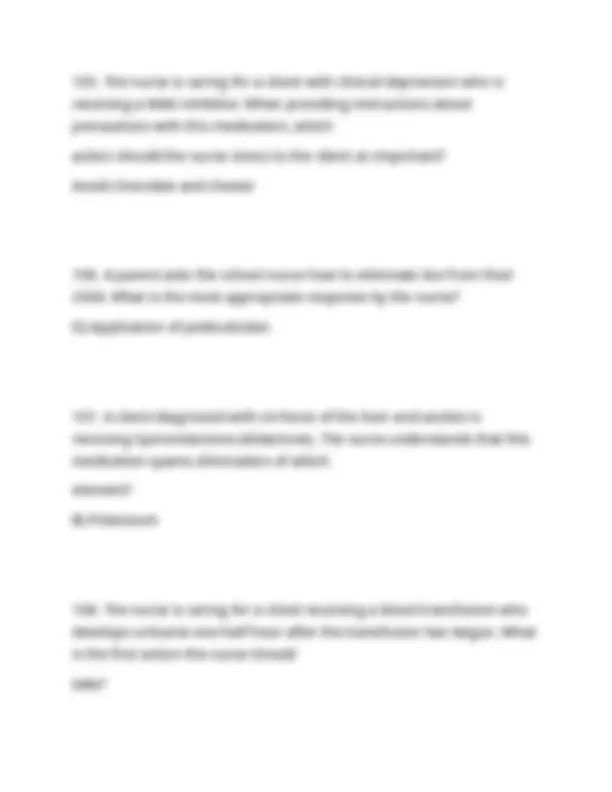
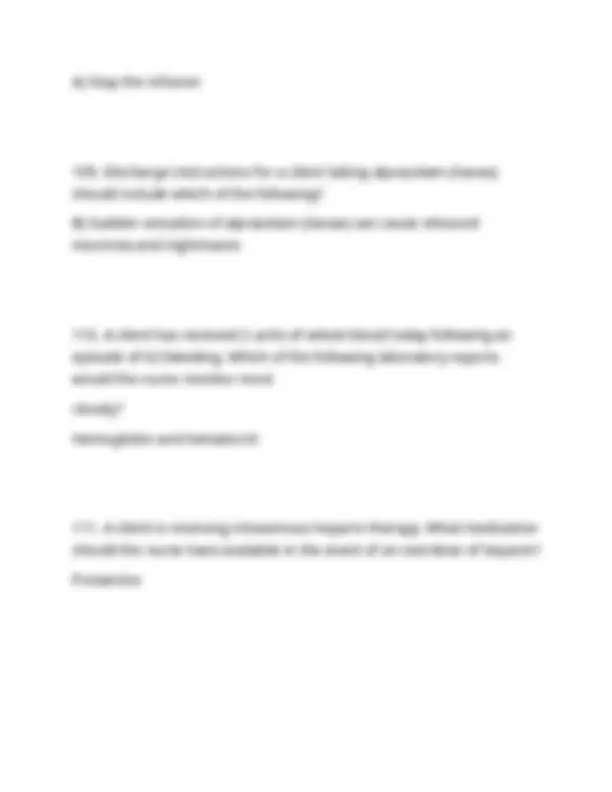
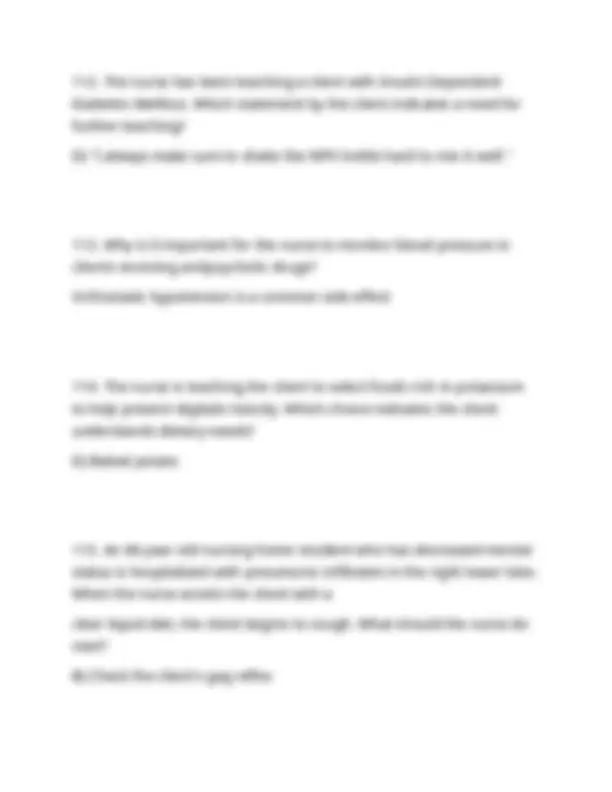
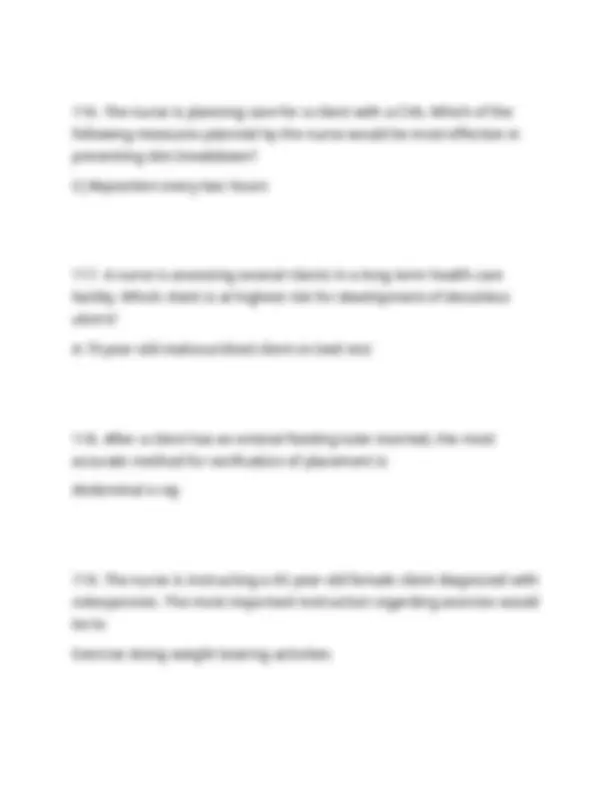
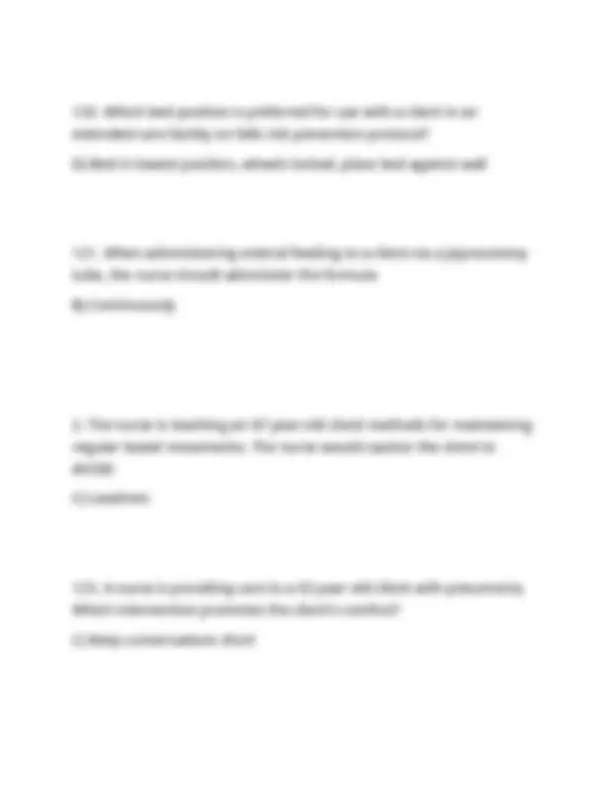
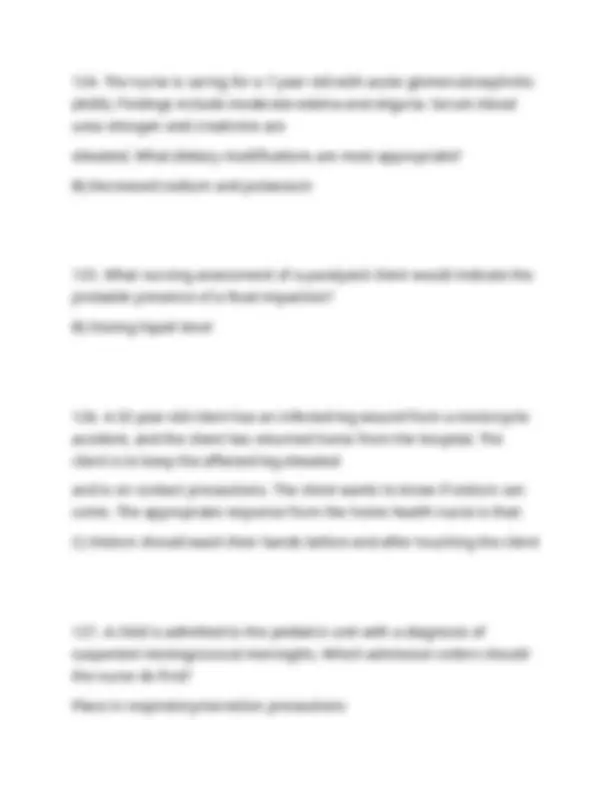
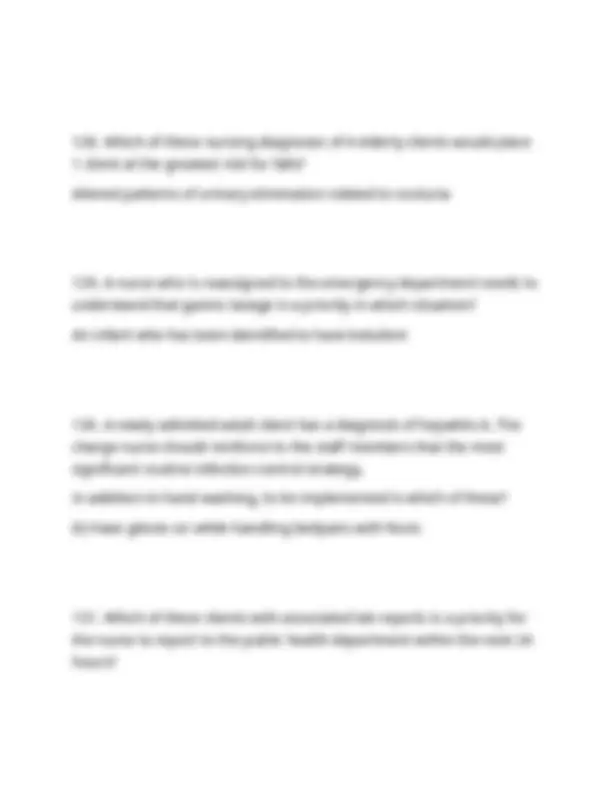
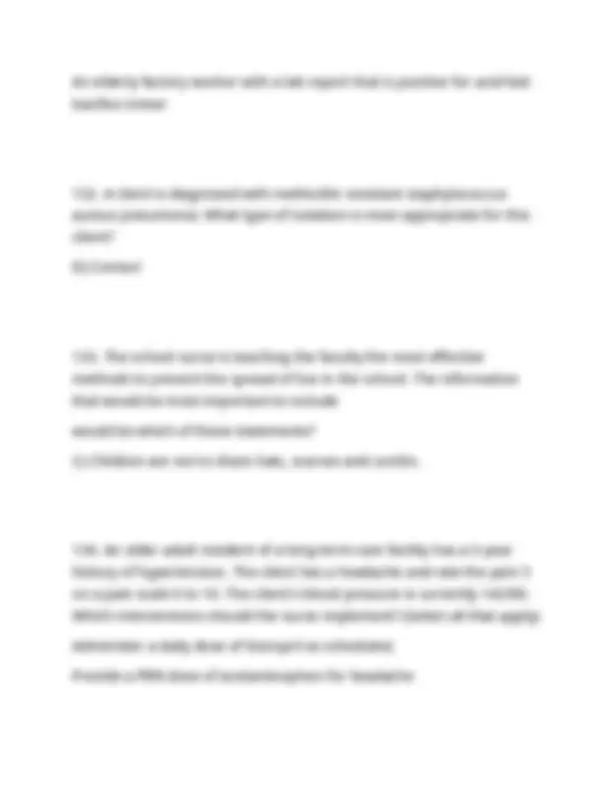
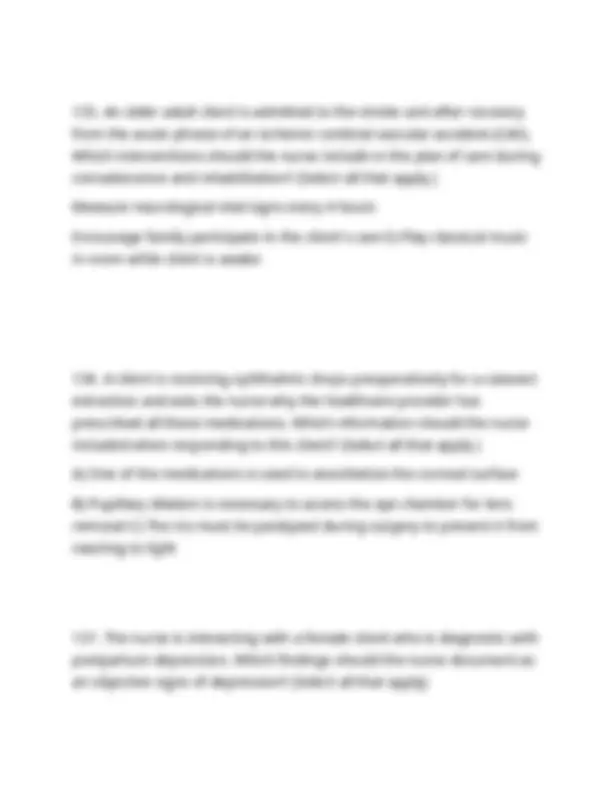
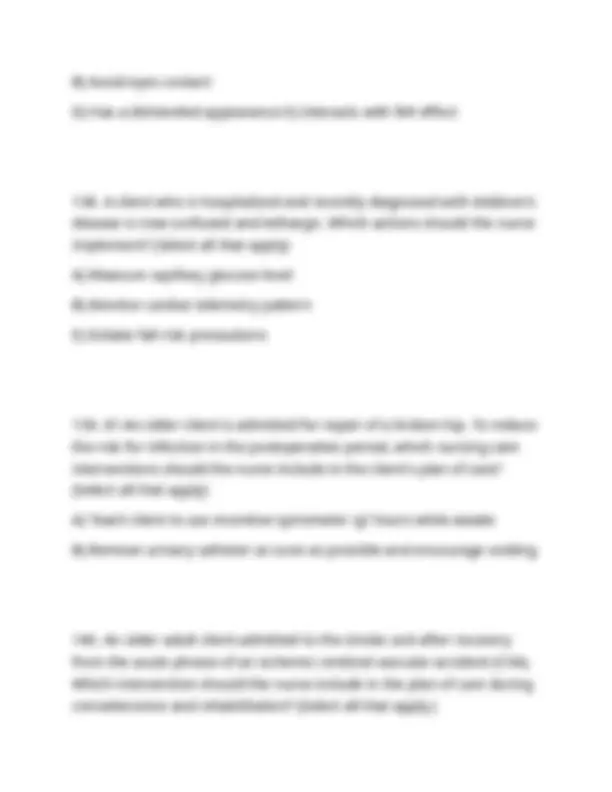
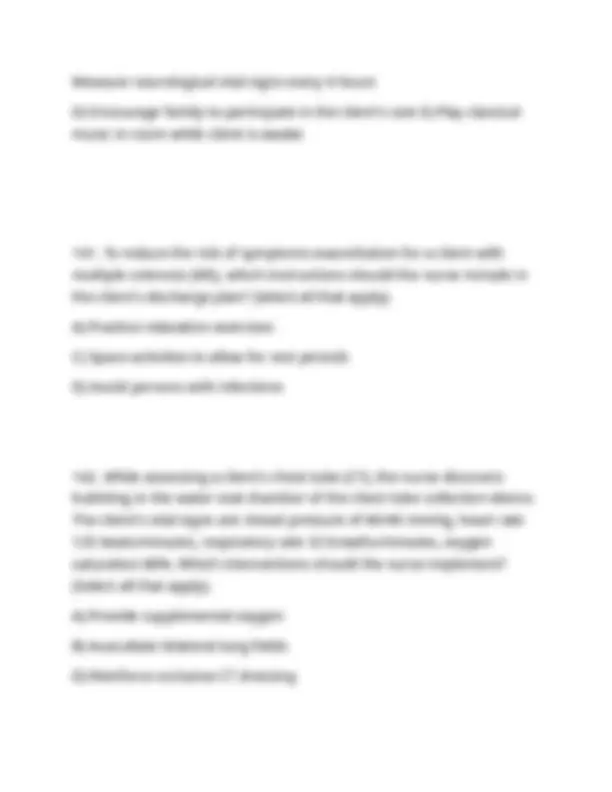
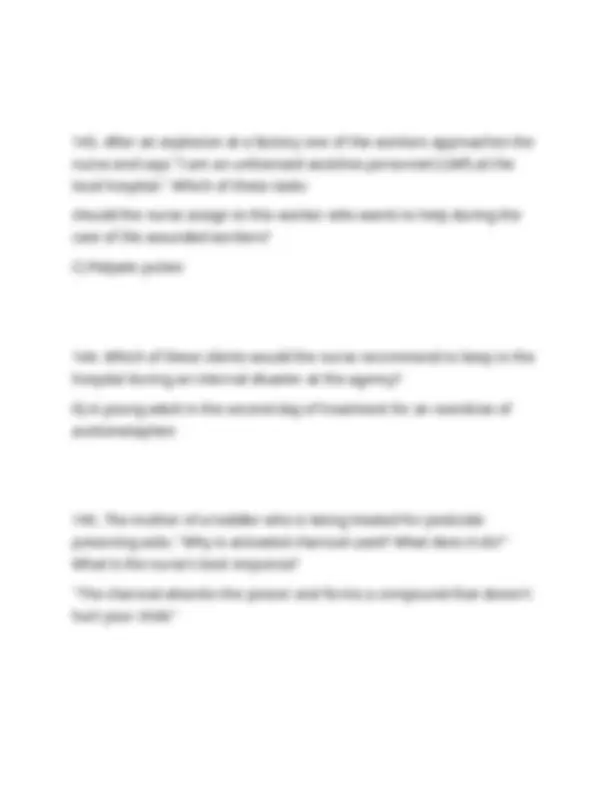
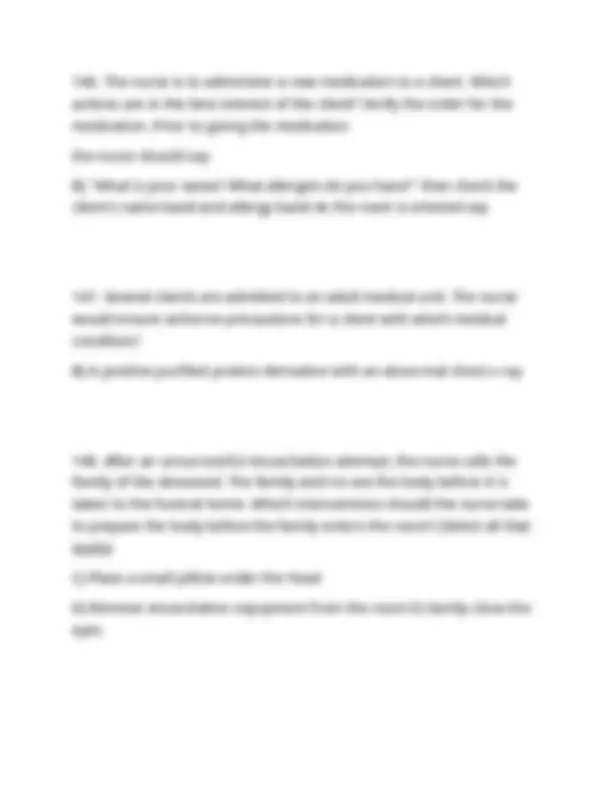
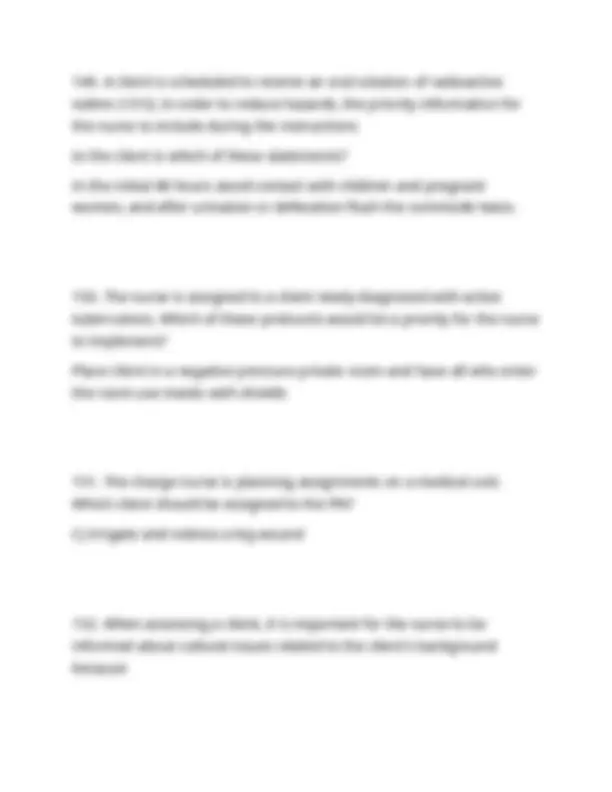
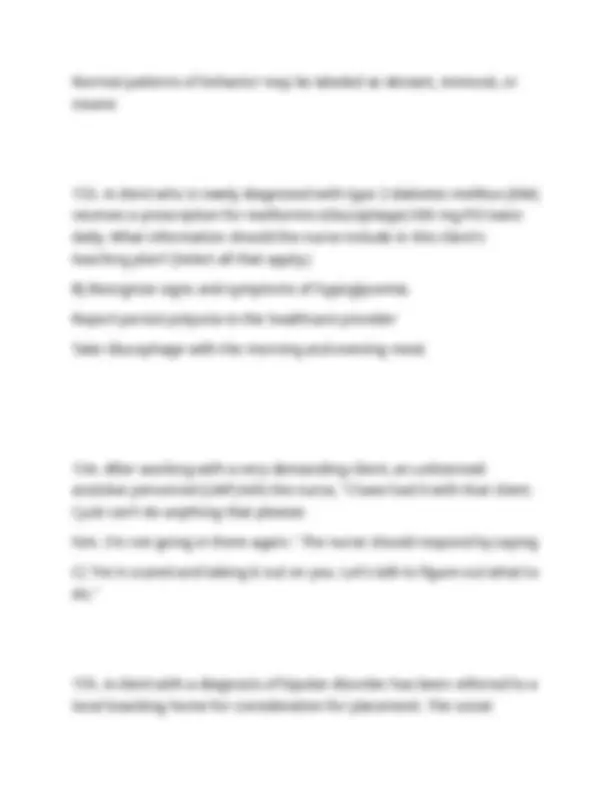
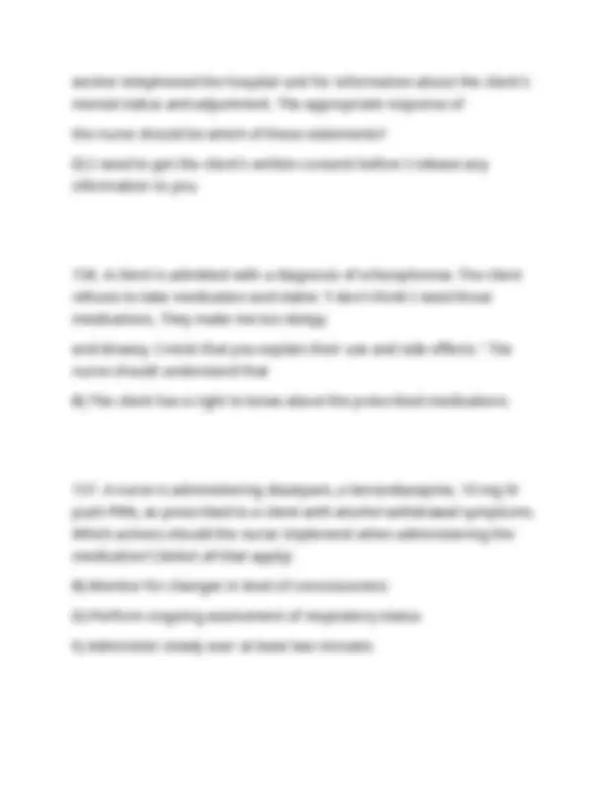
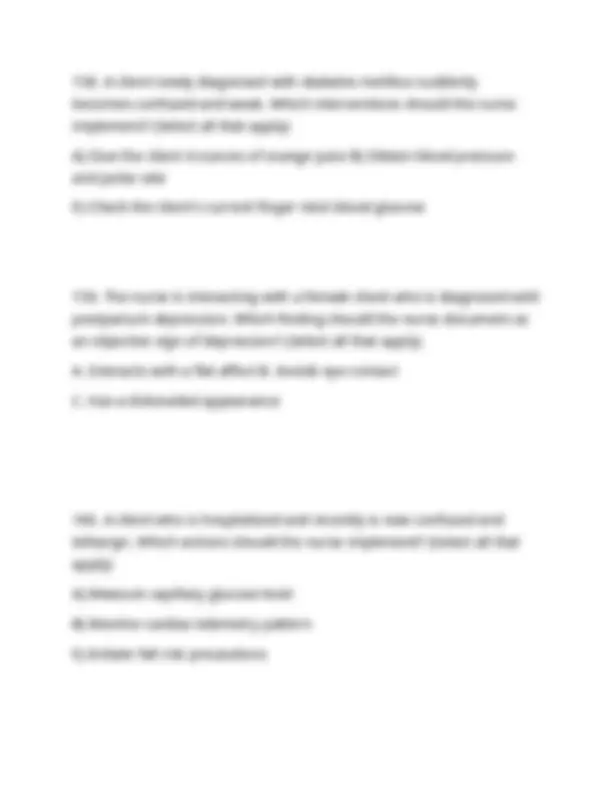


Study with the several resources on Docsity

Earn points by helping other students or get them with a premium plan


Prepare for your exams
Study with the several resources on Docsity

Earn points to download
Earn points by helping other students or get them with a premium plan
Community
Ask the community for help and clear up your study doubts
Discover the best universities in your country according to Docsity users
Free resources
Download our free guides on studying techniques, anxiety management strategies, and thesis advice from Docsity tutors
HESI RN PHARMACOLOGY EXAM 2025-2026| ACTUAL EXAM QUESTIONS WITH CORRECT ANSWERS |A +GRADED
Typology: Exams
1 / 47

This page cannot be seen from the preview
Don't miss anything!








































d. Assess the delivery mechanism of the oxygen tank, tubing, and cannula.
c. Advice the client to maintain bedrest so that safety can be ensured.
vascular disease. Which outcome should the nurse include in the plan of care for this client? d. The client's skin on the lower legs will be intact at the next clinical visit.
b. Ensure that the client is assigned to a room close to the nurses' station.
d. Assist him in identifying popular fast foods that are within his meal plan for diabetes.
A) Until the health care provider has determined that your ejaculate doesn't contain sperm, continue to use another form of contraception.
Can predispose to dysrhythmias
Pupil responses